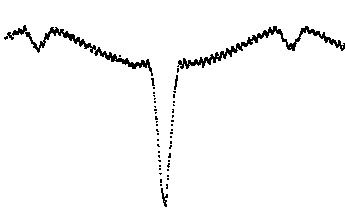
PG 1336-018

PG1336-018 is a very short-period (~0.1 day) eclipsing binary system comprising an sdB star and a cool companion, probably a late-type (~M5) dwarf. Eclipses are partial (i~81 degrees) and, because of the very short orbital period, only take about 15 minutes. The reflection effect is substantial, about 0.2 mag in amplitude. What makes the system particularly interesting, and the light curve spectacular, is that the sdB star is a rapid pulsator. In the discovery paper (MNRAS 296, 329, 1998) it was shown that at least two frequencies are present, with periods near 184 and 141 seconds and amplitudes of ~0.01 and 0.005 mag, respectively, although there was some indication that more, lower amplitude frequencies were present. The primary aims of the current WET campaign are to resolve fully the pulsation frequencies with the hope of identifying modes and to search for rotational splitting. Since it is highly likely in such a close system that the components are phase locked to the orbital motion, rotational splitting could be resolved in a few to a few tens of orbits. In addition, it might be possible to model the effects of eclipses on observed pulsations as a way of identifying the spherical harmonic quantum number; to search for phase shifts in the pulsations as a way of directly measuring the orbital separation; and to measure any orbital period changes by accurately timing the eclipse centres (this latter project has already begun at SAAO).
The light curve is continuously variable (reflection effect) and the eclipses are rapid and fairly deep (primary ~0.7 mag; secondary ~0.1 mag). The pulsational variations are also usually obvious (certainly through secondary eclipse, though not always during primary due to the rapid ingress/egress) but can be quite small.
RA Dec
13 36 13.3 -01 46 34 (1950.0)
13 38 47.6 -02 01 49 (2000.0)
mv=13.4
Consult the finder charts for more
information.
Run start: Please start your run on an integral multiple of ten seconds (times ending in "0"). Check the computer clock just before the start of a run, synchronizing with your master clock to within 0.1 sec if possible.
Integration times: Use 5 second integration times.
Filters: Use NO filters in any channel.
Guide Stars: Please consult the finder chart and use one of the two stars marked there, if possible. Also record your ch2 offsets and telescope plate scale so we can verify exactly which star was observed.
Sky calibration:Observers with 3-channel photometers should record sky in all three channels near the beginning and the end of each run to permit accurate cross calibration. Observers with 2 channel photometers should take sky by moving the telescope. We have sometimes in the past used the channel 2 verniers to measure channel 2 sky (only) but we find this is not really reliable. Try to take sky as often as needed, at least once per 1/2 hour, for 4 or 5 good sky points; more are not needed and cause unwanted data gaps in the light curve of the target star.
Apertures: Please use the smallest aperture consistent with getting data of good quality (e.g. no visible loss of light to the edge of the aperture). A general rule of thumb is to use an aperture approximately 8-10 times the diameter of the seeing disk. Record the size of the aperture (in arcsec) in your observing log.
Control Center: The XCOV 17 control center is at Iowa State University's International Institute of Theoretical and Applied Physics (IITAP).
Contacting the Control Center: Consult the Phone Contact List for information on phone, fax, and email for the control center as well as the other sites for this run.
Time Check: Please do a clock time check each night before taking data and verify your time with HQ at the beginning of the run, and as often during the run as possible. HQ will have an accurate clock available for phone clock checks.
Data Transfer: There are two ways to send your data and logs at the end of each night.
Observing Logs: We ask that you send a copy of your observation log along with the data, at the same time if you can.